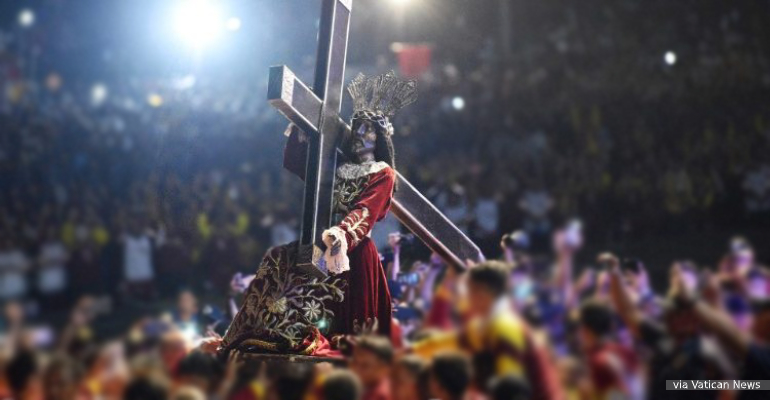Traslacion in Spanish means moving something from one place to another. The term offers a more accurate description of what we see during the feast of the Black Nazarene as the image (literally) makes its way through the sea of humanity. —(Inquirer, 2013)
Replication
As the growing number of devotees increased, the friars were concerned that the image would be damaged, hence ordering a replica from Mexico and sending it to Manila. However, according to hearsays, this replica has been dubbed as “Nazareno ng Mahirap,” while the one enshrined in Intramuros was called “Nazareno ng Mayaman.” Why? Because back then, the image in Intramuros was only accessible to affluent devotees. On January 9, 1787, Archbishop Basilio Sancho de Santa Justa ordered to transfer the Nazareno ng Mahirap to Quiapo Church. Unfortunately, the Nazareno ng Mayaman that was left in Intramuros was destroyed during the Battle of Manila in the 1940s. Nevertheless, the secular-administered church commemorates its transfer, engraving it to the Filipino Catholic culture. Four centuries later, the official replicas of the Black Nazarene were disseminated across different regions of the country, including Manila, Cagayan de Oro, Davao del Norte, Zamboanga City, Zamboanga del Norte, Iligan, Eastern Samar, Nueva Ecija, Nueva Vizcaya, and Batanes.Representation
Each devotee has their own reason as to why they are devoted to the Nazareno. Some say that it’s relatable, especially to the general mass. The suffering of Christ depicted the poverty and daily suffering of many devotees. Meanwhile, others believe and testify to the Nazarenos’ miraculous powers—having the image itself surviving natural calamities, wars, and healing a lot of the sick. Wishes, as well as guidance, were also granted, such as passing the board exams or gaining a job offer. However, Cardinal Luis Antonio Tagle said that only a true devotee can understand the significance of the celebration.Other facts about the History of the Black Nazarene:
- It was believed that the life-size image was first placed at the St. John the Baptist Church before the state handed it over to the San Nicolas de Tolentino Church in Intramuros;
- A group of men that encompassed strong devotion for the Nazarene established the first Philippine Confraternity Cofradia de Jesus Nazareno in 1620;
- During the 1650s, Pope Innocent X officially recognized the country’s strong devotion to the Black Nazarene;
- With the same concern as to the friars used to, the Archdiocese of Manila also produced a replica—placing the copy’s head on the original one (the version used in the procession), while the original Nazareno’s head is attached to the copy at the church’s main altar;
- Number of participants in this annual procession in Manila alone reaches up to 18 million and counting;
- Devotees participate in the procession on barefoot and endure a 7-kilometer walk that usually lasts up to 12 hours.
***
Today, the number of devotees who participate in the annual traslacion increases here in CDO. Consequently, tightening security measures and emergency response teams to continuously assure the safety of thousands of devotees. As of last year, there were 250,000 devotees. Since this year’s traslacion authorities anticipate up to 300,000 participants, they highly discourage the attendance of pregnant women, persons with disabilities/sickness, and children under 12 years and below.


Leave a Reply